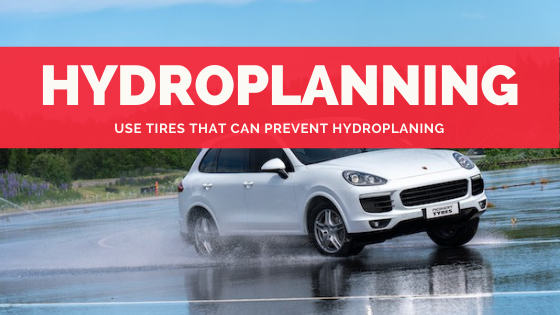You should always buy new tires when your current tires are worn out. When you feel that you are not getting the same performance from your tires as you used to get. This can be felt that you lose grip when cornering or your braking distance gets prolonged or that you feel you lose grip when driving on wet roads. When you feel that the performance is declining, you should always check the tread depth to see if you are below 5/32 inches depth. If the tread depth is above 5/32 inches, there might be other problems that lower the tires’ performance.
You should always aim to change tires when they are damaged or when they are worn out. Preferably you should try to change all four tires at the same time. The winter tires are more dependent on the tread depth than all–season tires, as it is needed for snow and avoid slushplaning. For the all-season tires, it becomes equally important in wet conditions but less in dry.
You should always check the tire pressure to ensure that you have the correct pressure on all four tires. Low tire pressure can make the car skid and feel like you have a flat tire. Low pressure can also damage the sidewalls of the tires. It will also increase the heat buildup, which increases tire wear, and it will increase the rolling resistance, which translates to higher fuel consumption.
Overinflated tires are also not good as they change the tire profile, so you will change the contact area between the road and the tire. You tend to have a worse grip and not optimal performance. The braking distance will be prolonged so that you might not be able to avoid accidents. Low tread depth will also prolong the braking distance and will increase the chance of hydroplaning. Hydroplaning will need a high groove volume to disperse as much water as possible to ensure that the tire doesn’t lose contact with the road surface. Failure to get rid of the water will cause the tire to lose contact with the road. When the tire doesn’t have any contact, you will lose the ability to steer the vehicle. It is, of course, a situation that you want to avoid.
Modern tires have improved a lot in this area. Innovations in how to design the tread for optimal water removal have been implemented. It has significantly reduced the chance of hydroplaning. I always recommend these tires as the main cause of accidents during thunderstorms is due to hydroplaning. If you plan to purchase new tires, look for tires that are good at preventing hydroplaning. If you need winter tires, then it is a different ball game, but you can still experience slushplaning, where the wet snow will cause the effect as with water. Similar innovations have been made here to prevent slushplaning.
For winter tires, you also want to ensure that you have the best possible grip for your driving conditions. If you mainly encounter icy roads, studded tires are your number one choice. They have a superior grip on ice and tightly packed snow. If ice is rare and you encounter snow more, you can also consider non-studded tires.
For more information regarding good tires, visit: https://www.nokiantires.com
